SPACE JUNK – A Boardgame – by Sean Huxter

Am I stupid? I’m exposing my new board game concept long before I have a working prototype. Won’t someone steal it?
I kept my first game concept, SP’LUNK, very tight to the chest until I had it tested enough to declare it ready. Still don’t know what to do with it. I am not up to Kickstarter-publishing it. I may begin submitting it to game companies.
No. First, this idea is not new. It’s not the first Space Salvage game. Check out Salvage Team, and even Firefly.
But what I want to do with this game is make a fairly fast, easy family game that can be played in an evening, even a couple of games, and not frustrate people, not make people do math, or think too hard about add-ons, statistics, and other stuff.
Like Ticket to Ride, it will be fairly simple, and fun.
Concept
I came up with the concept after 3D printing a model of the Rocinante for a friend of mine. It is a model freely available from Thingiverse, but it’s so low poly that it’s a bit embarrassing.
But it had this strange feel to me like it was a board game piece, enlarged. Low detail, bulky, solid, could easily be used (if shrunk down) as a board game piece.
Then I thought about The Expanse (the show the Rocinante is from) and the idea of space salvage came to me immediately. Not only would the game take place in the asteroid belt, it would consist of players who are “belters”, people who live in the belt and get by on space salvage.
Themes of Firefly come to mind as well of course, but Firefly is more about skullduggery. “I aim to misbehave.”
The idea is to crew a salvage ship in the belt and survive. Find and bring in salvage, lost cargo pods, lost fuel pods, and also a vital commodity in space – water, in the form if ice crystals.
The Board
The board will be made up of small hexagonal spaces, hopefully made up of a fairly large sheet of fabric, to take up a nice table top space. Lots of room to move.
I found a great piece of fabric on eBay that fits the bill perfectly!
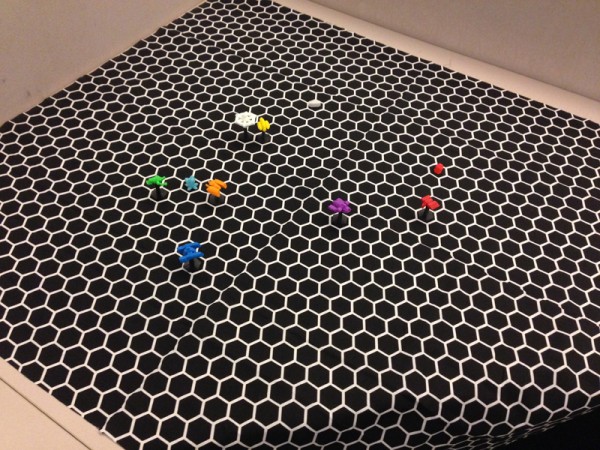 I intend to paint the sheet with astroids and planets, stars and even nebulous cloud, but those are decoration only. They do not affect gameplay. Anything that affects gameplay on the board will be placed on the board during setup and/or play.
I intend to paint the sheet with astroids and planets, stars and even nebulous cloud, but those are decoration only. They do not affect gameplay. Anything that affects gameplay on the board will be placed on the board during setup and/or play.
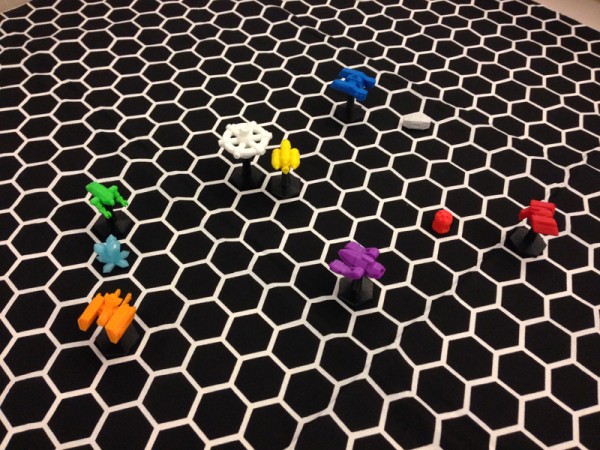
The hex grid will be indexed by a two-directional indexing system. Since a hex grid can be indexed in three directions, a random location is hard to find in a hex because the angled rows will not be equal in length. Die-rolling a random location would be impossible.
So I intend to work on a two-dimensional index system. One just follows the hexes across a vertical wall, and the other has to have a zig-zag line, but as long as you know which way to zig-zag, it works exactly like a quad grid.
The Pieces
The pieces will be 3D printed.
The first pieces used will be the Salvage Ships themselves. Currently I will have 6 pieces, each a solid primary or secondary color, with detail, but not overly detailed, each of which will sit atop a black base, itself hexagonal, so it can fit on the board easily.
I concepted out six bulky, utilitarian ships on paper, and colored them solid. Over this past weekend, I modeled four of those, and fitted them atop a base.
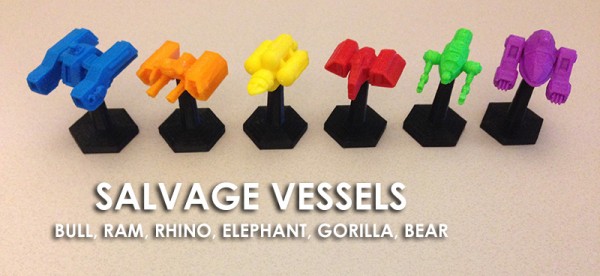
The Bull
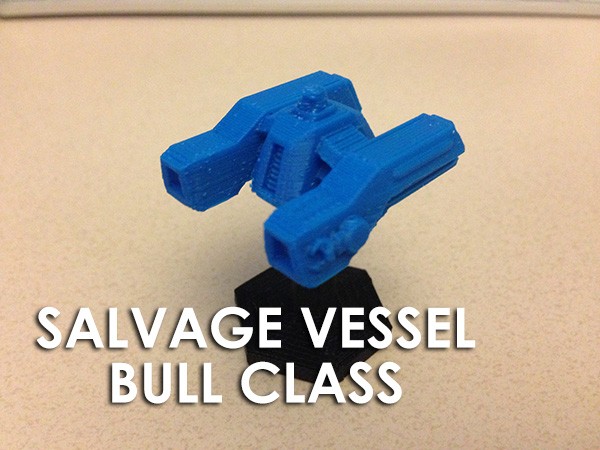
The Ram
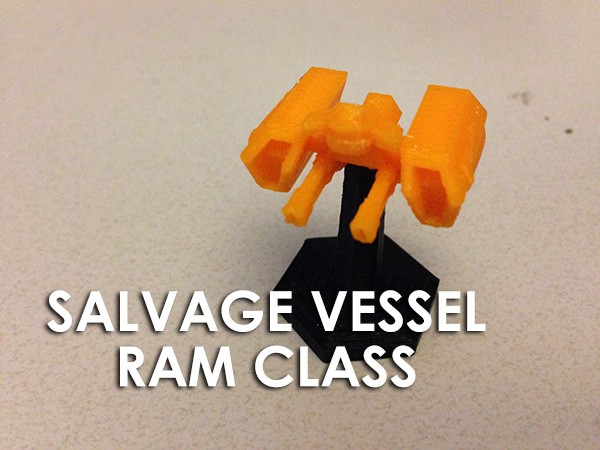
The Rhino
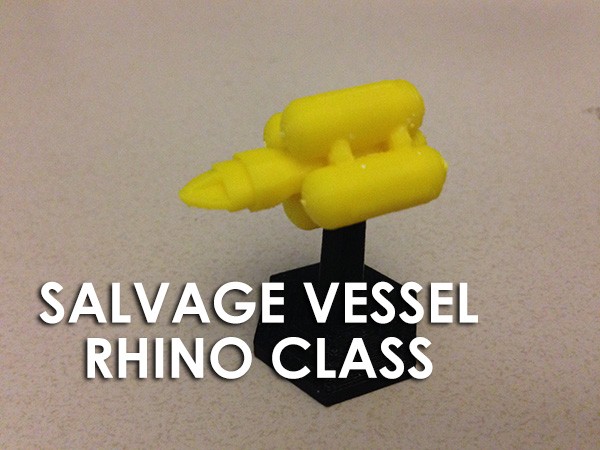
The Elephant (or Mammoth, or Mastadon)
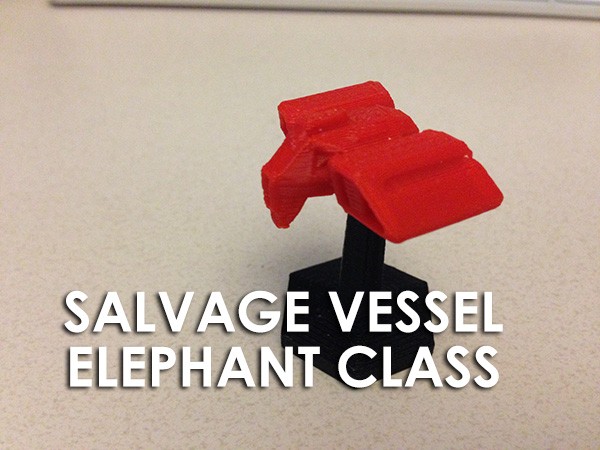
The Gorilla
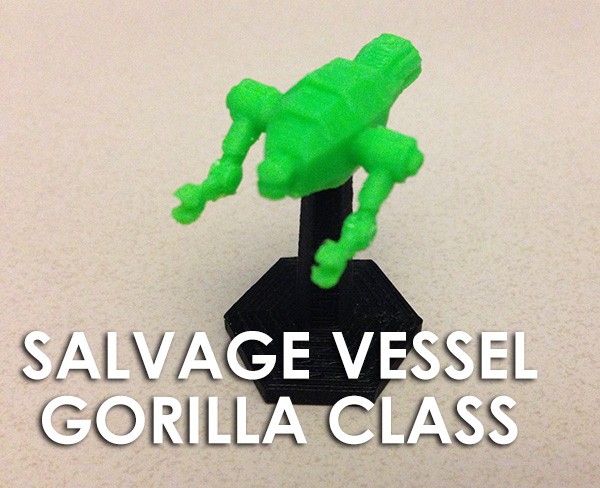
The Bear

Space Debris
Stuff that is found floating in space is open season for salvage. At this point I have three main salvage resources:
Cargo Pod
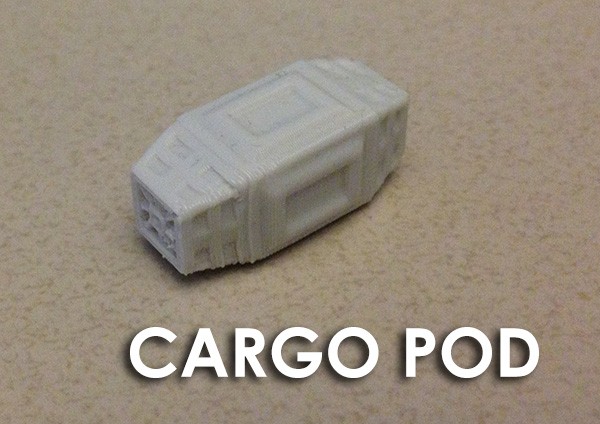
This contains mysterious cargo. Value depends on a dice roll, or other factors
Fuel Pod
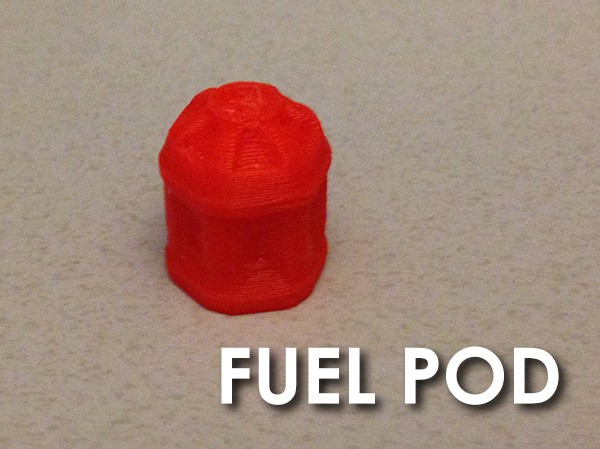
This will add to your ship’s fuel reserves, randomly rolled.
Ice Crystals
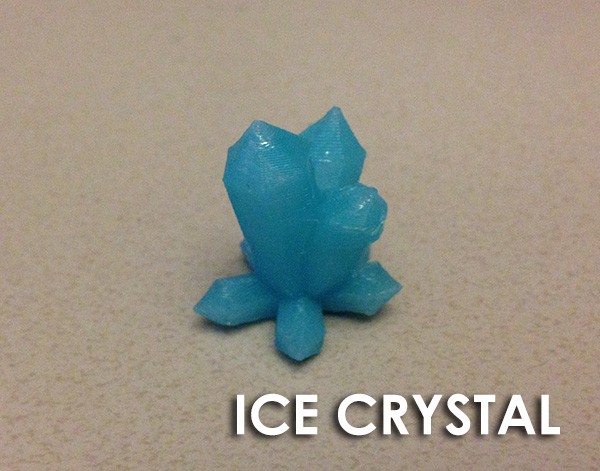
In space, water is a precious resource, worth its weight in … life. So finding water is a huge win.
Crew
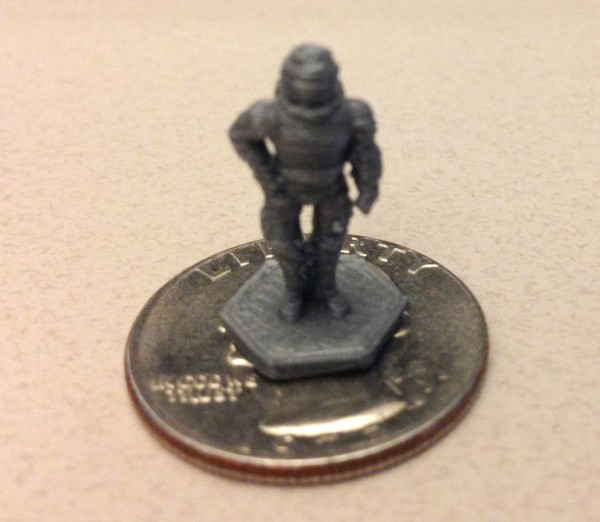
Crew members will feature in the game. Not quite sure how yet, but I was actually thinking crew decide how far you can go in a single turn, but that may be better done with fuel cells. Perhaps it decides how many tasks you can have at a single time, or each one gives a small bonus to something. There will be a maximum, I’m thinking six being a full complement (but that’s subject to determining what they are for), and with events and tasks, you can lose crew members. You can hire new ones at a space station, or perhaps pick some up at rescue missions, etc.
Mission Cards
Mission cards are dealt at setup. Each player picks 5 cards and must keep 3. (So they can discard 2 missions they find distasteful, too difficult, or too low reward.)
These are kept secret. Only at the end are they revealed, and if you were successful at any, you reap the rewards, which add to your score total. Highest score wins.
Mission cards can be collecting, action or other.
Examples:
Mission: Collect 7 cargo pods and 7 ice crystals. Reward: 1,000 Credits
Mission: Dock with a space station 12 times
Mission: Thwart 4 tasks from any one player
Task Cards
Task cards are not secret. You reveal them as you get them, and these usually contain simple, fairly immediate things you can do, and the rewards can vary greatly.
But also as the Task Cards are visible to everyone, other players are free to try to thwart the mission. If a player completes someone else’s task first, or prevents him/her from completing it, there is a reward that is usually half of the full reward for the same task.
Examples:
Task: A derelict ship has been detected at B24, R8. Dock with the ship and move all food supplies to your ship. Reward: 1,000 Credits. Thwart Value: 5,00 Credits.
Task: A passenger ship has sent out a distress signal. Detectors have located the ship at [D20], [D20] Rescue the passengers and crew. Reward, 5,000 Credits. Thwart Value: 2,000 Credits.
Tasks often involve “detecting” things that were not on the board prior to the card being revealed, but ship’s object detectors reveal them. This usually means the card specifies the object to place there, and a roll of two dice locate it (using the grid coordinate system I mentioned earlier.)
So suddenly something is on the board, and players can race to that location and reap the rewards, and others can try to stop them.
Space Stations
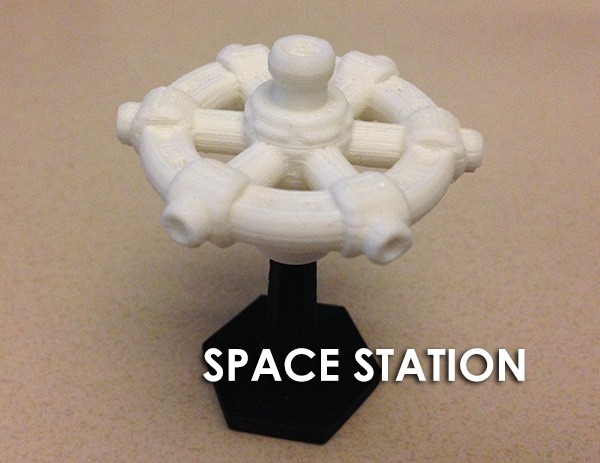
Space stations are placed on the board at setup time, and are stationary bases ships can dock at and do business. Business may include selling salvage, refueling, taking on new crew (crew count and loss of such will be a part of gameplay.)
Crew
Each ship has a crew. The captain is a given, but the crew (10) is expendable. Crew is kept track of by tokens held by each player. A ship operates best fully crewed. As you lose crew, the ship moves slower, or other disadvantages happen. Crew can only be gained by docking with a space station and spending money to pay them.
Winning
The winner is the player with most credits when the game ends.
End conditions come about in several ways.
Any one player achieves all 3 missions, and the game is over, (or that player can hold off on announcing if he’s behind, and can announce it later if he thinks he can win.)
Any player pulls the Game Over card (buried deep in the bottom third of the Task deck.)
I think we need one or two others, but I have not yet thought of those.

Are you selling your cargo vessels?
Not at this time. Perhaps at some point. I’m still trying to develop a board game using these pieces, so for now they will stay with me, unless I completely abandon the idea of a board game. At which point I may…